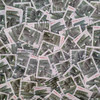
2010 First-Class Forever Stamp, Holiday Evergreens: Balsam Fir
# 4480 - 2010 First-Class Forever Stamp - Holiday Evergreens: Balsam Fir
$0.35 - $14.95
U.S. #4480
2010 44¢ Balsam Fir
Holiday Evergreens
Issue Date: October 21, 2010
City: New York, NY
Printed By: Banknote Corporation of America
Printing Method: Offset, Microprint "USPS"
Color: Multicolored
Rich color, hearty fragrance, and good needle retention make the Balsam Fir one of the most popular Christmas trees in North America.
While evergreen trees were used for centuries in pagan winter festivals, the modern tradition of indoor Christmas trees is thought to have begun in Germany. The first written record dates to 1601, when a visitor to Strasbourg, Germany, described a tree strung with “wafers and golden sugar-twists, roses cut out of many-colored paper, apples, gold foil and sweets.”
It is unclear when the practice began in the United States. One theory is that Hessian soldiers, homesick for their native country, decorated the first American Christmas tree in Trenton, New Jersey, in 1776. Another is that the Moravians of Pennsylvania introduced the first Christmas tree in the early 1800s. The tradition flourished after the Civil War, largely due to children’s books and women’s magazines promoting ways to decorate for the holidays.
Polish-born Pope John Paul II was the first to introduce the northern European symbol of Christmas to Vatican City. In 1982, a tree donated by Italy was erected. Each Christmas Eve since, a life-sized nativity scene with 17 statues is unveiled, symbolizing the birth of Jesus Christ in Bethlehem on that same evening so many centuries ago.
U.S. #4480
2010 44¢ Balsam Fir
Holiday Evergreens
Issue Date: October 21, 2010
City: New York, NY
Printed By: Banknote Corporation of America
Printing Method: Offset, Microprint "USPS"
Color: Multicolored
Rich color, hearty fragrance, and good needle retention make the Balsam Fir one of the most popular Christmas trees in North America.
While evergreen trees were used for centuries in pagan winter festivals, the modern tradition of indoor Christmas trees is thought to have begun in Germany. The first written record dates to 1601, when a visitor to Strasbourg, Germany, described a tree strung with “wafers and golden sugar-twists, roses cut out of many-colored paper, apples, gold foil and sweets.”
It is unclear when the practice began in the United States. One theory is that Hessian soldiers, homesick for their native country, decorated the first American Christmas tree in Trenton, New Jersey, in 1776. Another is that the Moravians of Pennsylvania introduced the first Christmas tree in the early 1800s. The tradition flourished after the Civil War, largely due to children’s books and women’s magazines promoting ways to decorate for the holidays.
Polish-born Pope John Paul II was the first to introduce the northern European symbol of Christmas to Vatican City. In 1982, a tree donated by Italy was erected. Each Christmas Eve since, a life-sized nativity scene with 17 statues is unveiled, symbolizing the birth of Jesus Christ in Bethlehem on that same evening so many centuries ago.












